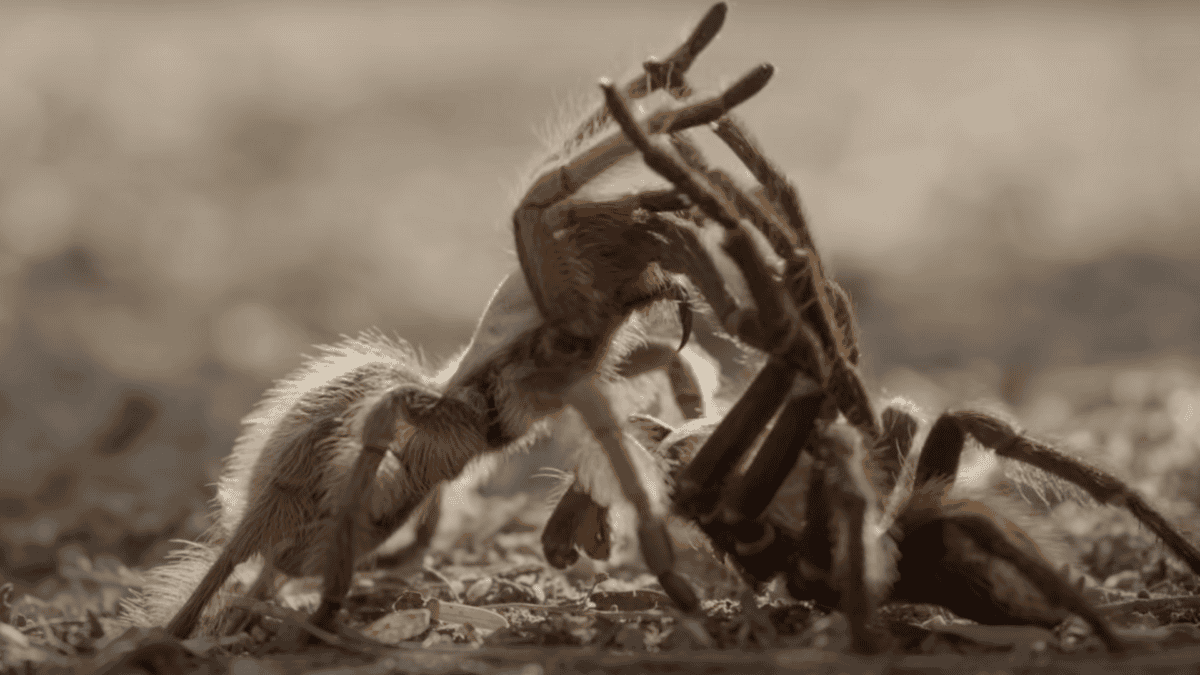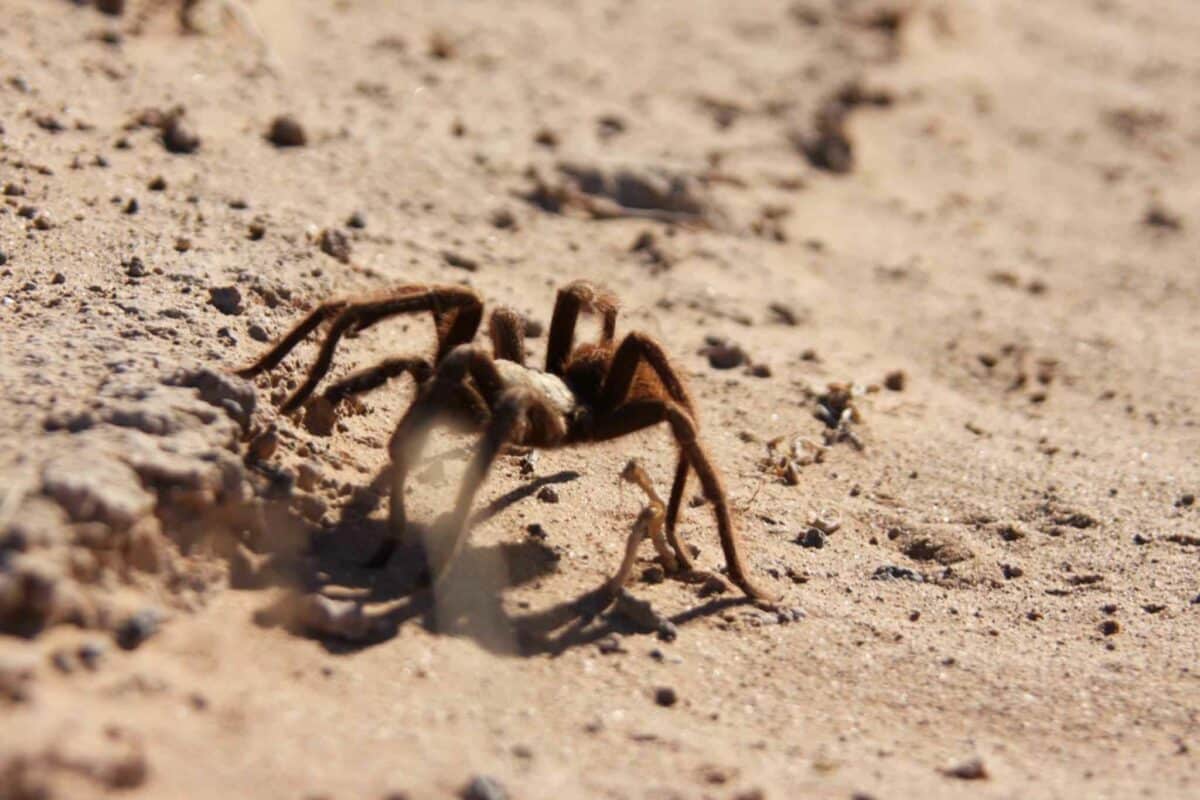Have you ever wondered how desert tarantulas, who live alone, mate with one another? Well, here’s a peek into what that process looks like!
The Dance Begins

Male tarantulas start their mating ritual with a careful approach. They need to be cautious to avoid alarming the female. It’s a delicate balance between showing interest and staying safe.
Watch full video here!
Risky Business

Mating is risky for male tarantulas. The female tarantula can be aggressive and even lethal. Because of this risk, he must navigate this danger to successfully mate and leave with his life.
Drumming Communication

When the male tarantula approaches a female’s burrow, he uses drumming to communicate. This involves tapping his legs on the ground. It’s a way to signal his presence and intentions to the female.
Approaching with Care

After the female is alerted to his presence, the male moves slowly towards the female. Any sudden movements could trigger a defensive response. If the tarantula wants to mate successfully, his approach must be measured and deliberate.
Assessing the Female

Before proceeding, the male assesses the female’s behavior. He looks for signs of aggression or receptivity; this assessment is crucial for his safety. He will only continue if he feels that he is welcome to.
The Ritual Dance

Once he gets closer, the male engages in a ritual dance. This dance is a series of specific movements involving each one of the tarantula’s legs. It serves to further communicate his intentions and win his mate’s approval.
Responding Female

If the female is receptive, she will respond positively to this dance. Her response reduces the threat to the male and encourages him to move even closer. Allowing the male to draw close indicates that the female is willing to mate.
Watch full video here!
The Final Approach

With the female’s positive response, the male makes his final approach. This is the most dangerous part of the process, so he must be extremely cautious. The female’s openness to mating does not ensure the safety of the tarantula.
The Act of Mating

During mating, the male inserts his pedipalps into the female, which transfers sperm to the female’s abdomen. She will store the sperm there for several days until she is ready to lay her eggs. This process is quick but risky, as the male must avoid the female’s dangerous fangs.
Quick Escape

As soon as the mating process is complete, the male must make a quick escape. Staying too long could result in the female attacking him or even eating him. Speed is crucial for his survival.
Female’s Behavior Post-Mating

After mating, the female’s behavior varies. Some may become aggressive, while others remain calm. This unpredictable nature makes it very risky for the male tarantula to hang around.
Male’s Survival Strategy

Because the female is so tough to predict, the male’s survival strategy must include being alert and fast. He must remain vigilant throughout the process and stay prepared to run. It’s no wonder that tarantulas often wait till they’re 10 years old to even try mating!
The Importance of Timing

Timing is everything in tarantula mating. The male must choose the right moment to approach and retreat. Mistiming can be fatal, but success means passing genes down to the next generation.
Communication Cues

The communication between the male and female as they mate is subtle. It involves a combination of movements and signals. Understanding all of these cues is vital for successful mating.
Watch full video here!
The Role of Pheromones

One such signal is pheromones, which play a role in the mating process. They help attract the male to the female. These chemical signals are what begin the ritual in the first place.
Environmental Factors

Environmental factors can influence the mating ritual. Conditions like temperature and humidity can affect the behavior of both tarantulas. These factors add another layer of complexity for the male to decipher.
Survival of the Fittest

The mating process is a test of survival for the male. Only the fittest and most cautious males succeed. It’s a harsh aspect of nature’s design, but it ensures that the next generation of tarantulas comes from the best possible stock.
Post-Mating Behavior

Post-mating, the male often avoids the female’s territory. This reduces the risk of future encounters and helps to keep the male safe. He then moves on to find new opportunities and continue to pass on his genes elsewhere.
The Cycle Continues

The mating ritual is a cyclical process. It ensures the continuation of the species and maintains a healthy population. Each successful mating contributes to the next generation, which makes all the hard work worth it.
Watch full video here!
Nature’s Balance

The tarantula mating ritual highlights nature’s balance between risk and reproduction. It’s a fascinating yet dangerous dance. This ritual shows the complexity of animal behavior and amazing design of the tarantula.
- Dinosaur Cowboy Discovers Dueling Dinosaurs In Montana - July 4, 2025
- Why Your Dog Might Be Staring At You - July 3, 2025
- 126 Million-Year-Old Largest Dinosaur to Ever Walk the Earth - July 3, 2025
